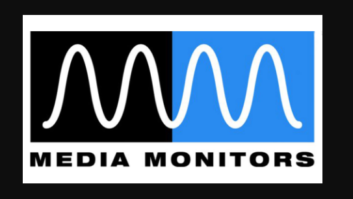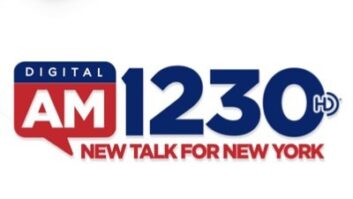Mark Jorgenson is president/owner of Jorgenson Broadcast Brokerage and Eddie Esserman is managing director of Media Services Group. They were interviewed by Suzanne Gougherty, director of MMTC Media and Telecom Brokers at the Multicultural Media, Telecom and Internet Council. MMTC commentaries appear regularly in Radio World, which welcomes other points of view on industry issues.
Suzanne Gougherty: In today’s climate what do you see has the strongest advantage to using a media broker? For instance, we realize that during deals communications can break down and emotions can run high. This is one of many areas where brokers can help bring the two parties back to the table. What other skills to brokers have that many in the industry are not aware of?
Eddie Esserman: In any climate a media broker serves as a good insulator and facilitator between or among the parties. While in some cases brokers aren’t neutral, they are interested (and usually only compensated) when a deal gets done. Brokers know the village of deals and as the saying goes, “It takes a village.” That’s often the case in a deal. We almost always know the attorneys on both sides of a deal, frequently the engineers, consultants, and other parties in a transaction. In some cases, the parties may have been long time competitors and others friendly neighbors, both can hinder a deal’s progress.
Mark Jorgenson: Good brokers bring years of experience to each transaction. While no two deals are the same, experienced brokers have handled enough different situations that they can help the parties navigate whatever may come up in the negotiations. Buyers look at the transaction from their side of the desk and sellers see things from their side. Brokers are often the bridge that connects these two viewpoints. By getting each party to look at the transaction from a broader perspective, there’s a better chance they’ll come to terms and get the deal done. That’s a vital role a broker plays in every transaction.
[Read: How a Broadcast Multiple List Website Got Started]
Gougherty: Please tell us your 20/20 vision for the future of AM radio and how you see it changing for the best or the worst? Are there still enough new entrants to keep the AM dial alive with new innovative programming?
Jorgenson: AM radio definitely has more challenges than FM. It is an older technology and is more susceptible to interference and noise in today’s crowded electronic spectrum. It remains an effective vehicle for many spoken word formats and will likely remain so for a while. But, to be commercially successful, it will need to attract compelling and unique content that can’t be found anywhere else. That will require new talent and new ideas. Both seem to be in short supply on AM.
Esserman: While there are a few entrants on the AM band, they are virtually all spoken word, and most not being programmed in English any longer. At best the future of AM is highly challenged. I note that Teslas, for example, do not include an AM radio. While I applaud the HD Radio experimentation on AM, I doubt that it will significantly alter the trajectory of the band’s future.
Gougherty: Have you seen an uptick in more new entrants in ethnic populations, or women buying AM or FM radio stations?
Jorgenson: Radio is a great vehicle to reach niche audiences. While many ethnic and foreign language populations in the U.S. live in concentrated areas, everyone is mobile, and radio does a great job of reaching a mobile audience. Internet and phone apps are challenging radio’s role in reaching ethnic audiences but so long as there is local content that is important to the station’s audience, radio will continue to deliver.
Esserman: A little, but only that. I have seen some couples buying stations, which is great. Radio stations make great family businesses.
Gougherty: What should the FCC consider next for the growth and sustainability of radio in the next decade?
Jorgenson: I believe the FCC understands that radio competes in a very broad media landscape. It competes for audience and advertisers with other radio stations, TV stations, websites, streaming music services, phone apps, Google, Facebook, Instagram, etc. Many of these competitive media are not regulated like radio and therefore have significant market advantages. If the courts would allow more consolidation of radio ownership, the radio industry would be better able to face those new competitors.
Esserman: I believe the FCC is open to further deregulation on ownership caps as proposed by the NAB and any action on that front was at least sidetracked for now by the court ruling this summer.
Gougherty: Has access to capital or financing been an issue for your buyers? And if so what can the industry do to support new entrants — the incubation program?
Esserman: Most smaller deals now do include some element of owner financing. The Small Business Administration, while not an easy process to navigate is a good source. I’ve done deals that included an SBA element. There are consultants that are well worth their fees, to help get deals done.
The incubator idea is a good one. It’s mentoring with a bonus. I fear that as it’s presently in place it will prove cumbersome, hard to benefit the smaller broadcaster who could use a break, and have limited participation. I hope I’m wrong.
Jorgenson: The lack of access to capital is a major problem in radio, particularly for small deals. With the backing of the Small Business Administration, there are some banks that will do a radio deal if the buyer has sufficient collateral and is willing to personally guarantee the loan. Sellers are realizing that, to get their station sold, they may need to do a cash/terms deal and patiently wait for a few years for the total purchase price to be paid. I don’t see the current Incubator Program having a major impact on helping new entrants into ownership.
Gougherty: You both have heard of the “Krasnow Rule,” named after our MMTC vice chair, Erwin Krasnow, which is — “95% of deals get done because the buyer and seller like each other.” Please share an anecdote illustrating the rule?
Esserman: I’ve known Erwin for decades, and the Krasnow Rule was certainly true. When it’s true today it surely facilitates a deal. Over the past decade, I think that’s changed a bit. Often the buyer and seller don’t know each other today. When they do, it certainly helps if they do, or at least get to like each other during the process. When we were a less-consolidated industry owners couldn’t own many stations and had similar numbers of stations, originally no more than seven AM and seven FM? stations. That was broadened to a dozen.
So we are an industry of many individuals who had many opportunities to meet at both state and national gatherings, and friendships and mutual respects ensued. When the industry changed to allow owning hundreds of stations it just wasn’t likely that these larger owners, especially after a few iterations of leadership, would know those who held few properties.
Jorgenson: No one has seen more deals done in our business than Erwin Krasnow. And he’s absolutely correct that having a buyer and seller who trust each other makes the transaction easier for everyone. However, with over 10,000 radio stations in the U.S., most buyers and sellers do not know each other. It’s the broker’s job to help create the trust and report needed to get a deal done.







